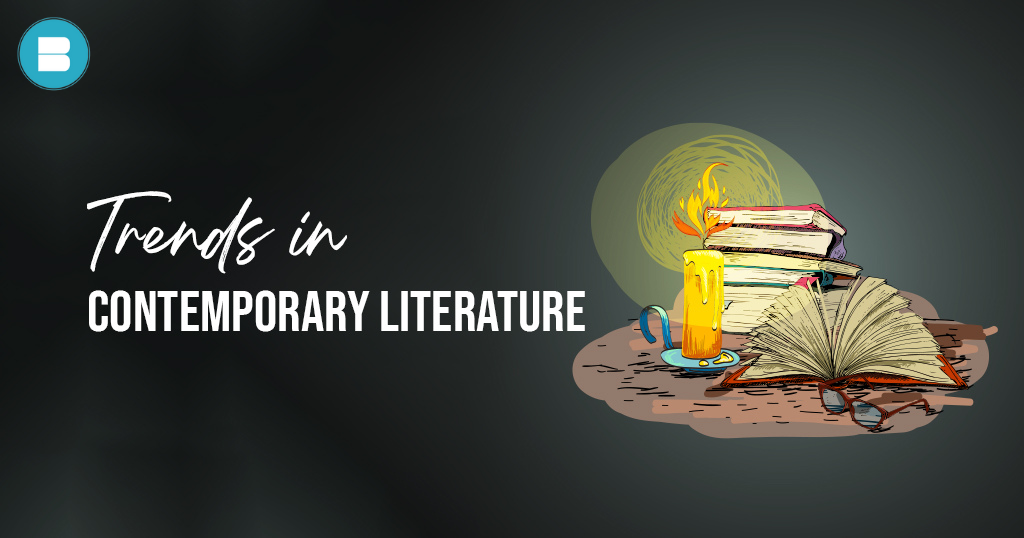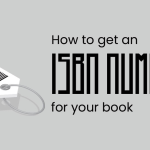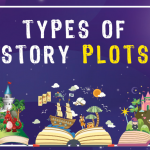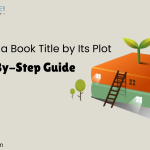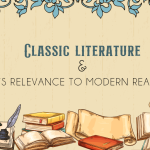What is contemporary literature?
The written word that is now in use is referred to as contemporary literature. It perfectly encapsulates today’s spirit, complete with all of its complexities, contradictions, and uncertainties. It covers a wide range of genres, including anything from novels to poetry, short stories to essays.
Contemporary literature reflects the concerns and issues that are relevant to contemporary society. It explores themes such as identity, race, gender, class, politics, and technology. It often challenges conventional norms and values, pushing the boundaries of what is acceptable and what is not. It invites readers to question their assumptions and biases, and to confront the uncomfortable truths of our world
Contemporary literature is not only a reflection of our times, but it also shapes our understanding of them. It helps us make sense of the complexities of our world, and to see it in new and different ways. It provides us with a window into other people’s lives, cultures, and experiences, fostering empathy and understanding.
In short, contemporary literature is a vital part of our cultural landscape. It helps us understand ourselves and the world we live in, and it invites us to imagine new possibilities for the future.
You may also like: Dog Man Books in Order: Books Listed Chronologically
Types of contemporary literature
Contemporary literature is a broad term that encompasses various genres and styles of writing. Here are some of the types of contemporary literature:
- Literary Fiction: This type of contemporary literature focuses on character development and exploring complex themes and issues.
- Young Adult (YA) Fiction: YA literature is targeted towards teenagers and explores themes that are relevant to their age group, such as identity, relationships, and coming of age.
- Science Fiction and Fantasy: This type of contemporary literature is set in imaginary worlds or alternate realities and often deals with futuristic technology, magic, or supernatural beings.
- Romance: Romance novels are focused on love and relationships and often have happy endings.
- Mystery and Thriller: These types of contemporary literature typically involve a crime or mystery that the protagonist must solve, often with high stakes and suspenseful plot twists.
- Memoirs and Autobiographies: These types of contemporary literature are based on the author’s personal experiences and reflect on their life story and perspective.
- Poetry: Contemporary poetry covers a wide range of themes and styles, from free verse to traditional forms, and often explores emotions and human experience in a concise and evocative way.
- Graphic Novels and Comics: These types of contemporary literature use a combination of words and illustrations to tell a story, often tackling complex themes and social issues in a visually engaging way.
Famous authors of contemporary literature
J.K. Rowling's Harry Potter series
J.K. Rowling’s Harry Potter series is considered contemporary literature due to its relevance to modern times and its popularity among modern readers. The series has become a cultural phenomenon and has gained a massive following among people of all ages, making it a significant part of contemporary pop culture.
One of the reasons the series has become so popular is its relatable themes and characters, which resonate with readers of all ages. The series explores complex themes like identity, friendship, love, loss, and the battle between good and evil, which are still relevant today.
Moreover, the series is an example of how contemporary literature can tackle social issues, such as discrimination and prejudice, in a compelling and engaging way. Through the portrayal of the struggles of characters like Hermione, who faces discrimination due to her Muggle-born status, and Hagrid, who is stigmatised for being half-giant, the series highlights the importance of acceptance and inclusivity.
You may also like: All Colleen Hoover Books in Order Listed by Series & Date

J.K. Rowling's Harry Potter series, Famous Author of Contemporary Literature.
Stephen King - The Shining, IT, The Stand
Stephen King is a prominent author of contemporary literature, and his works, such as “The Shining,” “IT,” and “The Stand,” have achieved cult status among modern readers. King’s writing is characterised by his unique ability to merge elements of horror, suspense, and the supernatural into a captivating narrative.
One of the factors that make Stephen King’s works contemporary literature is his style of storytelling, which incorporates modern themes and issues that resonate with contemporary readers. His novels often explore complex human emotions and psychology, as well as societal issues such as the impact of technology and the dangers of political extremism.
Moreover, King’s works are characterised by their rich character development and immersive world-building, which transport readers into a world that is both familiar and unsettling. His stories are not only entertaining but also thought-provoking, making them relevant to modern readers seeking meaningful experiences in literature.
You may also like: The Selection Series in Order: Full Book Guide
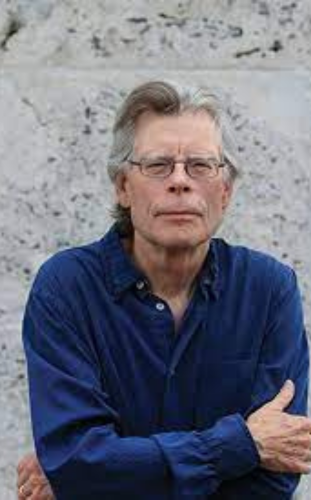
Stephen King - The Shining, IT, The Stand, Famous Author of Contemporary Literature.
Margaret Atwood - The Handmaid's Tale, Alias Grace
Margaret Atwood’s novels, including “The Handmaid’s Tale” and “Alias Grace,” are considered contemporary literature due to their relevance to modern society and the issues they address. Atwood’s works often explore themes such as gender, politics, power dynamics, and the impact of technology on society.
For example, “The Handmaid’s Tale” is a dystopian novel that examines the oppression of women in a patriarchal society. Atwood portrays a world where women are stripped of their rights and forced into roles as child bearers and servants for men. The novel highlights the dangers of authoritarianism and the importance of individual freedom.
Similarly, “Alias Grace” delves into the issues of gender and power in a historical context, exploring the life of a woman accused of murder in 19th century Canada. Atwood’s novel sheds light on the social constraints and limitations faced by women in the past and how they struggled to assert themselves in a male-dominated society.
Margaret Atwood’s contemporary literature provides a thought-provoking exploration of the human experience and its complexities, making it relevant to modern readers seeking to understand and confront the challenges of our time.
You may also like: 5 Key Steps to Successfully Self Publishing Your Novel
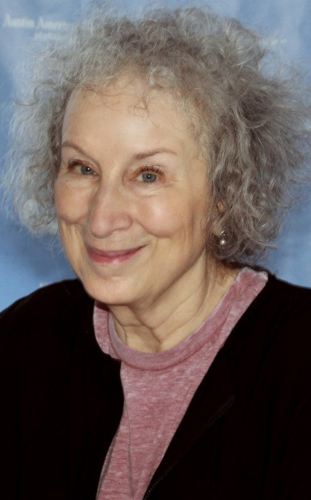
Margaret Atwood - The Handmaid's Tale, Alias Grace, Famous Author of Contemporary Literature.
Without Hesitation by S K Sharma
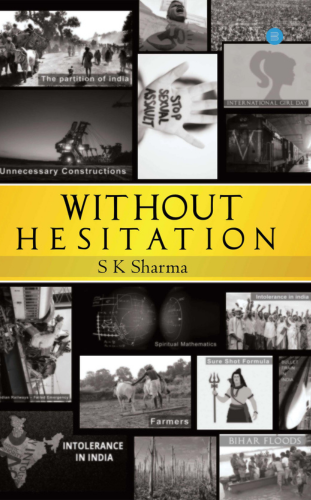
Without Hesitation by S K Sharma, Famous Author of Contemporary Literature.
Haruki Murakami - Norwegian Wood, Kafka on the Shore
Haruki Murakami is a Japanese author whose works have gained global recognition as contemporary literature. What makes his novels stand out is the way he blends elements of the surreal with everyday experiences. His writing style is unique and introspective, often exploring themes of alienation, love, and loss.
In “Norwegian Wood,” Murakami explores the struggles of young adulthood and the challenges of finding oneself in a changing world. The story follows Toru Watanabe as he navigates the complexities of relationships, loss, and self-discovery. Murakami’s writing is introspective and thoughtful, delving into the psyche of his characters and their emotional landscapes.
In “Kafka on the Shore,” Murakami takes readers on a surreal journey through the minds of his characters. The story follows the adventures of Kafka Tamura, a teenage boy on a quest to uncover the truth about his past, and Nakata, an elderly man with an unusual gift for talking to cats. The novel explores themes of identity, fate, and the nature of reality, and Murakami’s vivid imagination and skillful storytelling create a world that is both fascinating and thought-provoking.
You may also like: Joe Pickett Series in Order: Complete CJ Box Reading Guide

Haruki Murakami - Norwegian Wood, Kafka on the Shore , Famous Author of Contemporary Literature.
What is modern literature?
Modern literature refers to literary works that were produced during the late 19th and early 20th century, primarily in Europe and North America. This period was characterised by significant cultural and social changes that led to new artistic movements and experimentation with literary styles and themes.
Modern literature is marked by its focus on the individual, the exploration of the inner self, and the depiction of complex psychological states. Many modern authors were interested in breaking away from traditional forms of storytelling and experimenting with different narrative techniques, such as stream of consciousness and multiple perspectives.
Moreover, modern literature reflects the changing attitudes and values of society at the time. Many authors were interested in social and political issues, such as gender and class inequality, and incorporated them into their works. This gave rise to new genres, such as the modernist novel and the social problem novel.
It is characterised by its experimental and innovative nature, its focus on the inner self and individual experiences, and its engagement with social and political issues of the time. It paved the way for contemporary literature, which continues to push boundaries and explore new forms of storytelling.
Examples of modern literature
- “The Great Gatsby” by F. Scott Fitzgerald Firstly, the novel was published in 1925, which is considered the modern era in literary history. It was a time when writers were experimenting with new narrative techniques and exploring new themes, which is evident in “The Great Gatsby.” Secondly, the novel portrays the changing social and cultural landscape of America during the early 20th century. It reflects the excesses and decadence of the Roaring Twenties, which was a time of great economic prosperity and social upheaval. Thirdly, the novel is written in a modernist style, with its fragmented narrative structure and use of symbolism and metaphor to convey its themes. Fitzgerald’s use of first-person narration by the character of Nick Carraway, who is an observer and participant in the events of the story, also reflects modernist literary techniques. Finally, “The Great Gatsby” is a timeless exploration of universal themes like love, wealth, power, and the American Dream. It speaks to readers of all generations, making it a classic of modern literature.
- “The Road” by Cormac McCarthy “The Road” by Cormac McCarthy is modern literature because of its unique narrative style, themes, and subject matter. Firstly, the novel’s narrative style is experimental and non-traditional, with sparse punctuation and fragmented sentences. This technique emphasises the bleak and barren nature of the post-apocalyptic world that the characters inhabit. The style is also reflective of the characters’ emotional states, as they struggle to survive in a world that has been destroyed. Secondly, the novel tackles themes that are relevant to modern society, such as survival, love, and morality. The post-apocalyptic world depicted in the novel forces the characters to confront these themes in a raw and unfiltered way. The novel also explores the relationship between a father and son, and how it is tested in the face of extreme adversity. Lastly, the subject matter of the novel is both disturbing and thought-provoking. The novel explores the consequences of a catastrophic event and the lengths that people will go to survive. The bleak and barren landscape of the novel is a warning of what could happen if we continue down a path of destruction and disregard for the environment.
- “Invisible Man” by Ralph Ellison “Invisible Man” by Ralph Ellison is a modern literature novel for several reasons. First, it was published in 1952, which falls within the time period of modern literature. Second, the novel deals with issues that were particularly relevant during the modernist period, such as race relations and the concept of individual identity. The novel tells the story of an unnamed African-American man who feels invisible to society due to his race. He experiences a number of challenges as he tries to navigate a society that is hostile towards him, including being expelled from college and being subjected to racist treatment by white people. Through the protagonist’s experiences, the novel explores the complexities of racial identity and the struggle for self-acceptance in a society that devalues blackness. Furthermore, the novel’s style and structure are also characteristic of modern literature. The novel is written in a nonlinear style, with a fragmented narrative that jumps between different points in time. This reflects the modernist tendency to experiment with form and structure, and to reject traditional narrative conventions.
You may also like: Mistborn Series in Order: Start to Finish
Difference between modern and contemporary literature:
The terms “modern” and “contemporary” are often used interchangeably when discussing literature, but they actually have different meanings.
The terms “modern literature” and “contemporary literature” refer to two distinct literary genres that are frequently used interchangeably. In terms of historical period, subjects, and writing style, they differ significantly.
Literature from the late 19th to the middle of the 20th century is referred to as modern literature. This time frame encompasses the modernist movement, which was distinguished by a rejection of conventional structures and a stress on subjectivity, individualism, and literary experimentation. The social, cultural, and political developments of the day were reflected in modernist literature, which frequently examined the inner workings of the human brain.
Contemporary literature, on the other hand, refers to works of literature that are written in the present time or recent past. Contemporary literature is often characterised by a focus on current social, cultural, and political issues, as well as a diverse range of voices and perspectives. It includes a variety of genres and styles, from literary fiction to popular fiction, and often deals with issues such as globalisation, technology, identity, and diversity.
While modern literature and contemporary literature differ in terms of time period and themes, they also have different writing styles. Modern literature is often characterised by a more formal and experimental writing style, with a focus on techniques such as stream-of-consciousness narration and fragmentation of plot and character. In contrast, contemporary literature tends to be more accessible and relatable, with a focus on character development and storytelling.
Trends in Literature
Contemporary literature is a dynamic and constantly evolving field, with new trends and themes emerging all the time. Here are a few current trends in contemporary literature:
- Realism: A literary trend that emerged in the 19th century, realism focused on depicting everyday life and experiences in a realistic and honest way. Realist authors often used detailed descriptions and dialogue to create a sense of authenticity in their works.
- Modernism: A literary trend that emerged in the early 20th century, modernism was characterised by experimentation with form and style. Modernist writers often used stream-of-consciousness narration, fragmentation, and other innovative techniques to convey the subjective experience of their characters.
- Postmodernism: A literary trend that emerged in the mid-20th century, postmodernism was marked by a rejection of traditional narrative structures and a focus on themes of fragmentation, deconstruction, and intertextuality. Postmodernist writers often used irony, parody, and self-referentiality to challenge the reader’s assumptions and expectations.
- Magical realism: A literary trend that emerged in Latin America in the mid-20th century, magical realism blends realistic and fantastical elements to create a dreamlike or surreal atmosphere. Magical realist writers often use magical or mythical elements to comment on real-world issues.
- Social justice literature: A contemporary literary trend that focuses on issues of social justice, equity, and human rights. Social justice literature often deals with issues such as racism, sexism, homophobia, and poverty, and may be used to raise awareness, provoke social change, or promote activism.
Trends in contemporary literature
Contemporary literature is a dynamic and constantly evolving field, with new trends and themes emerging all the time. Here are a few current trends in contemporary literature:
- Diversity and Inclusion: One of the most significant trends in contemporary literature is the emphasis on diversity and inclusion. Many contemporary authors are actively working to include diverse characters and perspectives in their work, highlighting the experiences of underrepresented groups and challenging traditional literary norms. For example, Angie Thomas’ “The Hate U Give” and Tommy Orange’s “There There” are both powerful examples of contemporary literature that explore the experiences of marginalised communities.
- Environmentalism: As the world faces increasing environmental challenges, many contemporary authors are exploring the relationship between humans and the natural world. From Margaret Atwood’s “MaddAddam” trilogy to Jeff Vandermeer’s “Annihilation,” contemporary literature is filled with stories that imagine the consequences of environmental disaster and humanity’s potential for environmental stewardship.
- Magic Realism: A genre that has gained significant popularity in recent years is magic realism. This style combines elements of the fantastic with realistic depictions of everyday life, creating a surreal and dreamlike world. Examples of magic realism in contemporary literature include Gabriel Garcia Marquez’s “One Hundred Years of Solitude” and Haruki Murakami’s “The Wind-Up Bird Chronicle.”
- Social Commentary: Many contemporary authors use their work as a vehicle for social commentary, exploring the pressing issues of our time and challenging readers to consider their own roles in shaping society. For example, Colson Whitehead’s “The Underground Railroad” uses the story of a runaway slave to explore the ongoing legacy of slavery in America.
- Genre-Bending: Finally, one trend that is becoming increasingly popular in contemporary literature is genre-bending. Authors are pushing the boundaries of traditional genre categories, blending elements of different genres to create entirely new forms of storytelling. A great example of this is Marlon James’ “Black Leopard, Red Wolf,” which combines elements of African mythology with classic fantasy storytelling.
You may also like: The Housemaid Series in Order: A Complete Reading Guide
Some examples of trends in contemporary literature:
There are several trends in contemporary literature that have emerged in recent years. Some examples include:
- Diversity and representation: Contemporary literature has increasingly focused on diverse representation of characters, reflecting the diverse backgrounds and experiences of readers. This includes stories featuring characters from underrepresented communities, such as LGBTQ+ characters, characters of colour, and characters with disabilities.
- Magical realism: A genre that blends the fantastical with the mundane, magical realism has become a popular trend in contemporary literature. This style of writing often features surreal or dreamlike elements within a realistic setting, blurring the line between fantasy and reality.
- Memoirs and personal essays: Nonfiction has become increasingly popular in contemporary literature, with memoirs and personal essays often topping bestseller lists. These stories offer a glimpse into the lives and experiences of individuals, often exploring themes of identity, family, and relationships.
- Environmental themes: With the growing concern over climate change and the environment, contemporary literature has begun to address these issues. Many recent novels explore the impact of humans on the natural world, as well as the potential consequences of inaction.
- Genre blending: Contemporary literature often blurs the lines between different genres, creating unique and unconventional stories. For example, a novel might combine elements of science fiction, mystery, and romance, resulting in a story that defies categorization.
Contemporary literature is constantly evolving and adapting to reflect the changing world around us. These trends are just a few examples of the diverse and innovative stories being told in modern times.
You may also like: Imposter Syndrome for Authors: Steps to Overcome Imposter Syndrome

